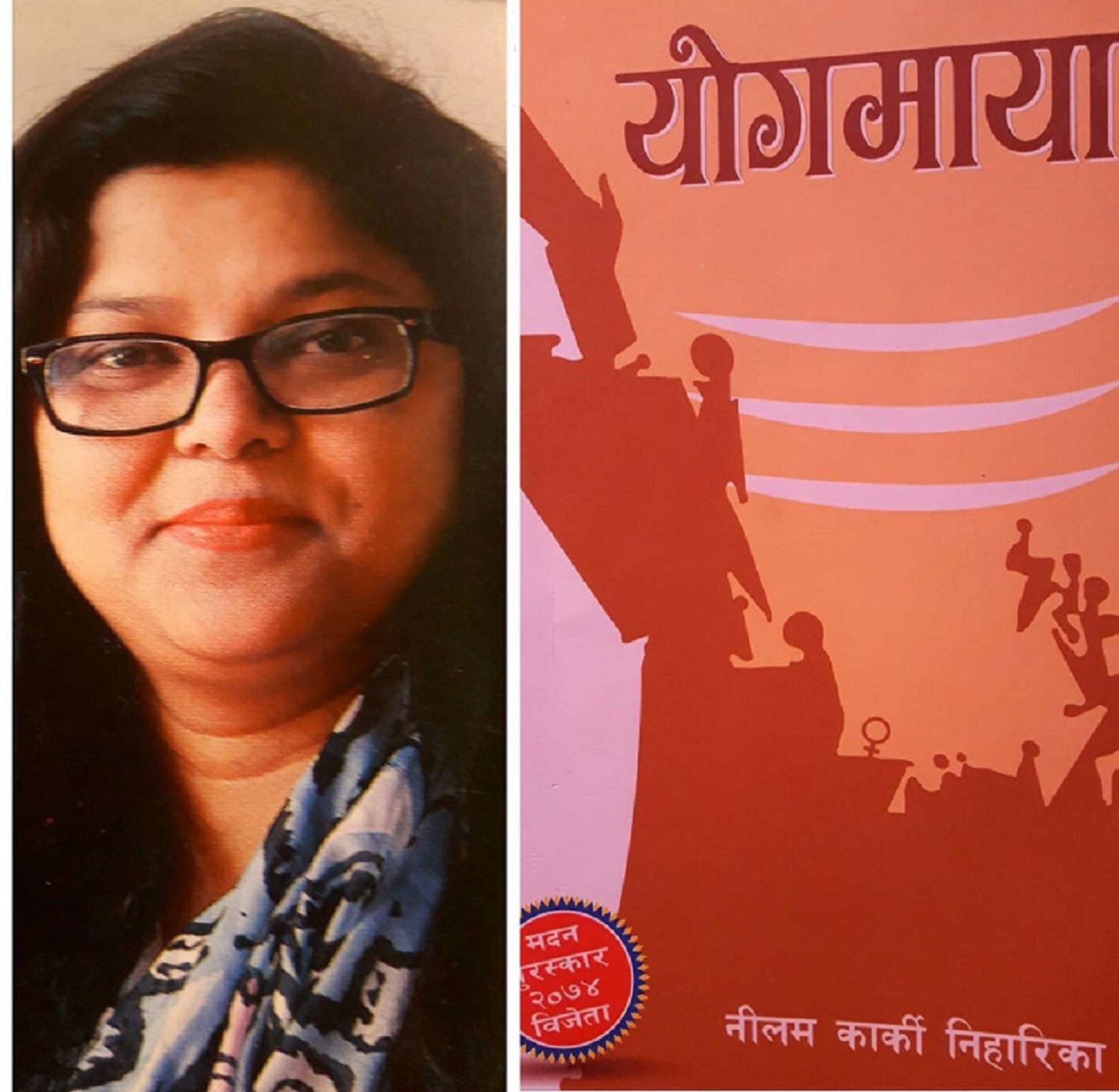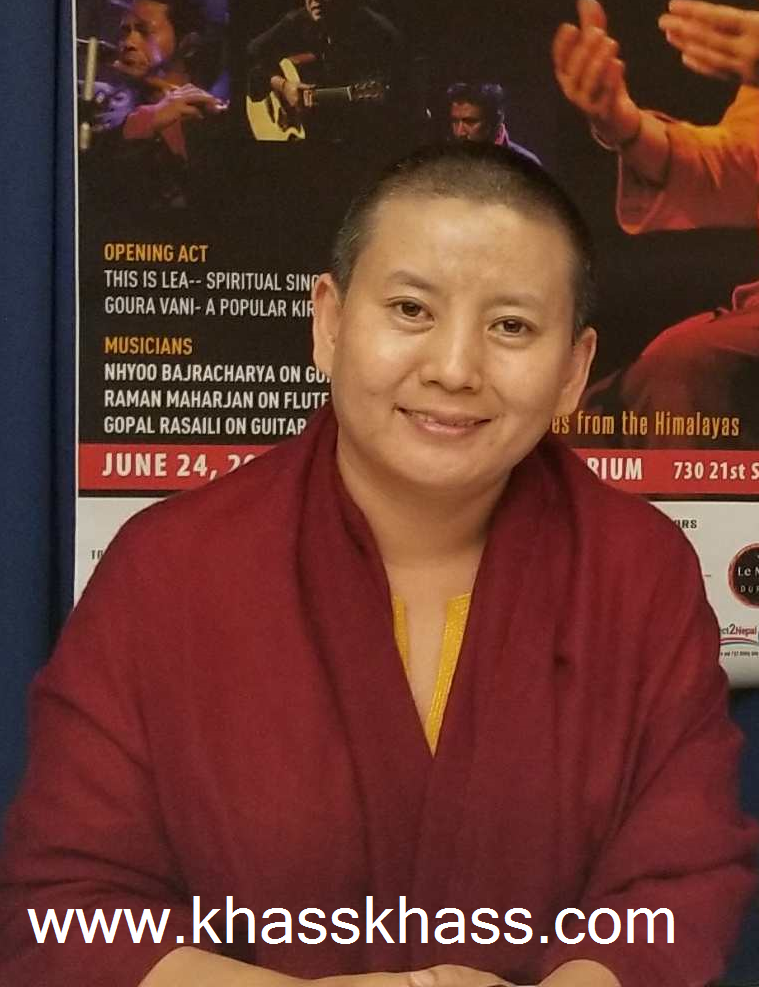A Reader's Perspective on Kālchakra,(Teknarayan Dhakal)
A Reader's Perspective on Kālchakra
- Teknarayan Dhakal
... unfolding the sorrowful pages of history
- Dr. Govinda Raj Bhattarai
Bakhat Bahadur Thapa (b. Magh 29, 2022) was born at Dullu in Dailekh. He completed his school education in 2042. He gathered painful experiences at home and abroad (i.e. India). On is return from India, he involved himself in a typing institute of his own in Kathmandu. Moved by the contemporary political, social and cultural turmoil of the nation, he has created powerful fictions—three novels, namely, Paradesh (2058), Kuhiro Ra Kāg (2061) and Kālchakra (2064) and a collection of short stories titled Āghāt (2062). In this way Mr. Thapa has contributed to the Nepali Literature substantially.

The title 'Kālchakra' signifies ‘death hovering in the Nepali sky over Nepali people and the unprecedented threat over the existence of Nepal’ which might claim anybody anytime during the period of decade long Maoist insurgency. Also, it is a realistic novel written in the third person narrative, born out of the author's experiential level.
Poverty, unemployment, sluggishness, discrimination, helplessness and threat to the national integrity from seen and unseen corners are the problems that Nepal and Nepalis are fighting with. Ever since the CPN (Maoist) raised these issues and declared armed struggle against the state, the whole nation, especially the villages, changed into the boiling pot of crossfire of the two antagonistic warring forces – the Maoist rebels and the security men (Armed police force and RNA soldiers). The absence of the state machinery, mostly in the villages forced the villagers, especiallay youths, to leave their home village and families. Searching for the security of life and job opportunities, some of them fled to India, others to the gulf countries, to the jungle to join the Maoists and rest of them came to the city centre, especially to Kathmandu. Amanlal, the central character in the novel, takes advantages of their helplessness.
As depicted in the novel, Khapatlal enters Nepal on barefoot. He has got three brothers– Raislal in Kathmandu, Pasarlal in Birgunj and Osarlal in Hong Kong; and two sons– Amanlal and Gambhirlal. Amanlal has set up Sunrise Computer Centre in Kathmandu, where he assembles and sells computers. He hires the technicians and workers and creates a hierarchial order among them. The first class consists of Aman's relatives, who are ascribed for financial management; the second class consists of computer engineers and technicians; and the third class which means sweepers, waiters and porters. These blue-collar workers are the Nepali youths– Padam, Dhanesh, Pradip, Rajesh, Prem, Khadka, Tularam, Shyam, Ratna, Jagat, Gagan, and Kharke. Kahnaiyalal and Bimal hail from India.
The novel opens with an introduction of the central character Amanlal– having a dirty appearance and a crooked mentality, surrounded and attended by his workers. He is an anti-hero because he lacks heroic attributes. He is "petty, ignominous, dishonest and clownish". His actions and dialogues reveal his paracitic and devilish nature. He is built around the single idea of commodifying the poor employees and exploiting the gullible computer owners. Kahnaiyalal, though a worker, belongs to Aman's camp, for he is the epitome of dishonesty, double-speaking and flattery. Amanlal and his relatives in the due course of time become millionaire because they are the sole traders of computer parts in Nepal. It exposes how the foreigners become masters and the native workers their puppets and servants.
As the time passes, there arises internal conflict between the workers, who are paid under the cut-throat policy, and the owner Amanlal. These characters cannot fight back by forming a workers' union though some of them make an individual attempt to take revenge of Amanlal. Workers like Nagendra crawl their livelihood dipped in utter poverty. Dhanesh joins the Maoists, Kharke is determined to eliminate the age-old suppression of the Dalit people. The encounter of Jagat while coming to Kathmandu, with the Maoists rebels in the cloak of RNA soldiers and their conversation chills anybody's spinal chord. The U-turn of Jagat's speech–first in opposition, then in full support of the Maoists–is sufficient to read the terrified psyche of the people during the war. Similarly, other characters go as far as India and Saudi Arabia. The insurgency concludes with the collapse of the Royal rule in 2062/063.
Within a very short span of time Amanlal's business thrives and he amasses a lot of money and owns big buildings. But because of Amanlal's moral wickedness, ill-behaved workers and competitive market economy, the sunrise computer centre collapses. Then, Aman opens up a pharmaceutical factory secretly without paying his former workers. They, in turn, smash the office room of this new factory demanding for their due salary. Later, Raislal is said to be suffering from throat cancer and referred to New Delhi in India. On the other hand, Amanlal loses mental balance due to the loss of business, uses medicine without any physician's prescription and the medicine damages his intestines. His workers Padam and Dhanesh find him walking in the street as a mad man–crying lonely, disheveled hair, tattered dress, unruly and uncontrolled. They admit him to the hospital. On the fifth day Aman's eyes brim with tears and breathes his last and meets his tragic end.
The plot is not complex, but loose. The unity of the narrative depends not upon the machinery of the action but upon the person – Amanlal. He binds the otherwise scattered elements together. By bringing various domestic incidents related to different employees, the novelist has given stress upon the characters.
The author has made the poetic justice by showing Amanlal's downfall by his insanity and sickness as the result of his business loss and possessive nature. His cry for 'My money ! My money !’ in the presence of his workers from his death bed reminds the readers of Joseph Conrad's Heart of Darkness where Kurz confesses his wrongful past actions and says 'The horror ! The horror !' at the eleventh hour. His tragic end cannot win the reader’s sympathy.
As Charles Dickens finds the best material of the novel in the life of the common people so does Bakhat by choosing almost all his characters from the rural part of Nepal and rest of them are intruders from India, an open secret. These native characters suffer at home and abroad. The author presents Kharke as the representative of the oppressed of the oppressed Dalit community. Kharke has full support to the Maoist war as he thinks Maoists the only redemptive power. By the characters’ actions and dialogue, Bakhat exposes the harsh reality of the Nepali society – girl trafficking, technical deception, corruption, flattery, social discrimination, cause of prostitution, humiliation, brokery, threatening and mass killing, family disintegration, hoarding of black money, political instability, absence of the state interfernce, self-alienation and helplessness.
W.H. Auden, a British American poet observes that "Huckleberry Finn is one of those books which is a key book for understanding the United States" and "Oliver Twist for corresponding pictures of a British attitude." Similarly, any reader can pick up these books in the Nepali literature that unfold the devastated socio-economic condition of Nepalis– Muna Madan by Laxmi Prasad Devkota, Basain by Lil Bahadur Kshatri and Muglan by Dr. Govindaraj Bhattarai and for the reader who wants to feel the insurgency-ravaged Nepali society during the decade long Maoist insurgency, here are three more–Socrates’ Footsteps (2010 AD) by Dr. Bhattarai (translated into English by Balram Adhikari), Āgāko Yatradeki Āgāko Yātrāsamma (2065 BS) by Sukum Sharma and Bakhat Bahadur Thapa's Kālchakra (2064 BS).
***
Trans/Ed Govinda Raj Bhattarai, Stories of Conflict and War, p1
M.H. Abrams, A Glossary of Literary Terms,1993, p-214.
R. A. Close, The English we Use, 1961, P 192



